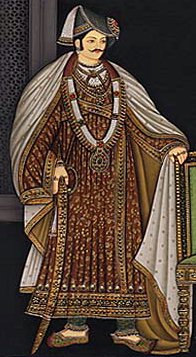
TULWARS
& KHANDARS

Famous
the world over, the tulwar is the single most recognisable piece of weaponry in the middle east and India. The Khandar is a rarer and often more decorative sword which has a straight blade unlike the typical tulwar.
There
are many different forms of tulwar, from the straight bladed Kirach to the overty curved Tega. A few selected examples are shown here. Click on each picture to view an enlargement.

This is classic example of tulwar design is 41" in overall length and has a hilt engraved
in silver with hand guard[called kulaba in mughal days]the top portion of the hilt
has a small pointed piece jutting out. Engraving on blade also in silver.

This highly decorative version has a broad blade with the cutting edge
on the inside. This goes to show the wide variety of blades that were
at one time or another fitted into the standard tulwar hilt.

This is a rare cousin of the tulwar called the tega and it is characterized by a: very heavy, wide,
curved T-spined blade. The length of the blade (in a straight line) is 30 inches but if one follows the edge,
it is almost 35 inches. Close to the handle, the blade is 2 inches wide and widens in a Kilij style
toward the tip where it's maximal width is 2. 75 inches

This is an old Kirach, i.e. Tulwar with straight blade, which looks like a European rapier

Typical khandar with destinct straight blade broadening towars the tip. Hilt is similiar to that of the
tulwar but has protruding centre piece that can stick out several inches in certain examples.

This is an Indian Firangi with a 41 inch triple fullered blade and a steel basket hilts of typical form.






